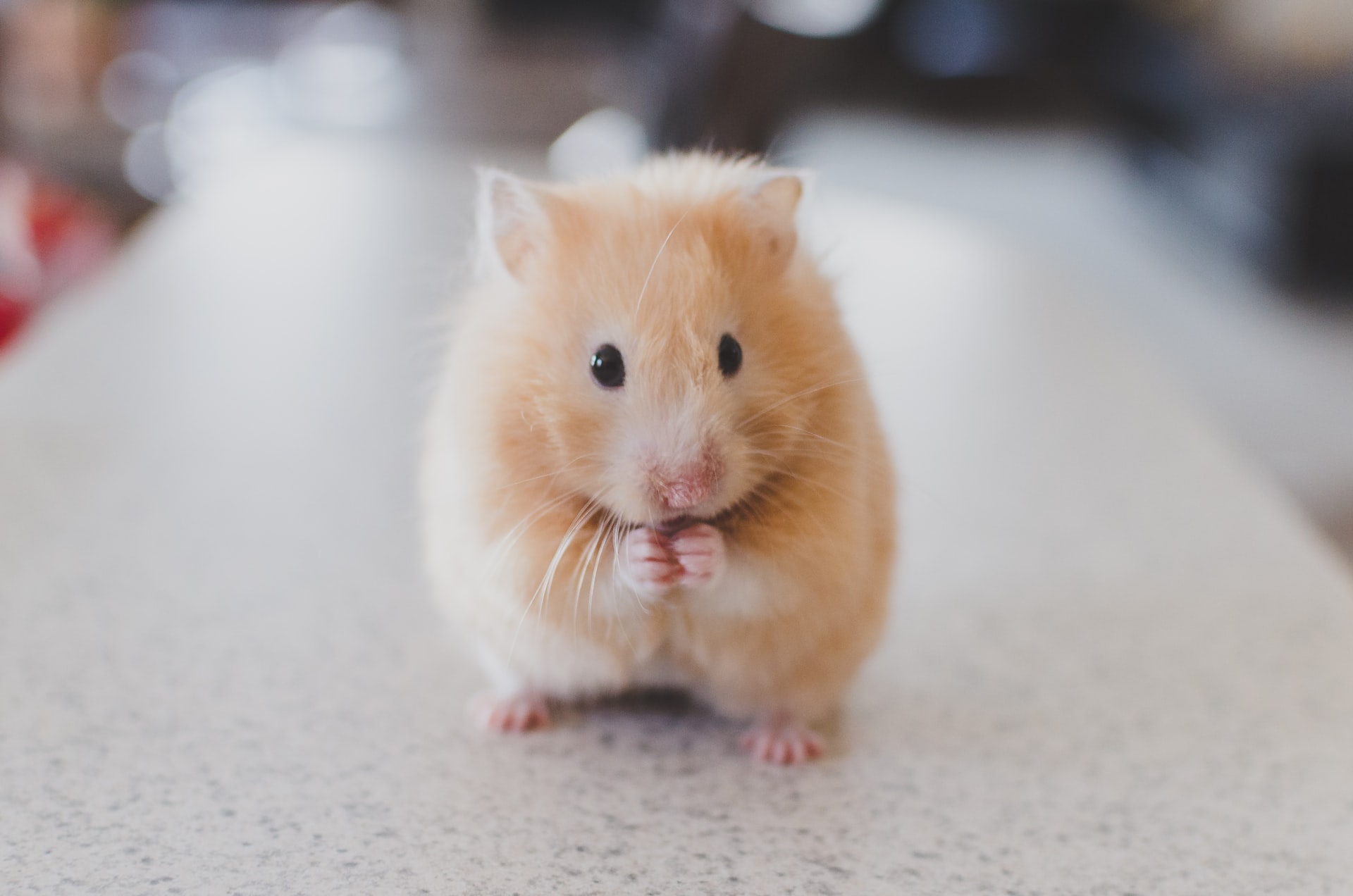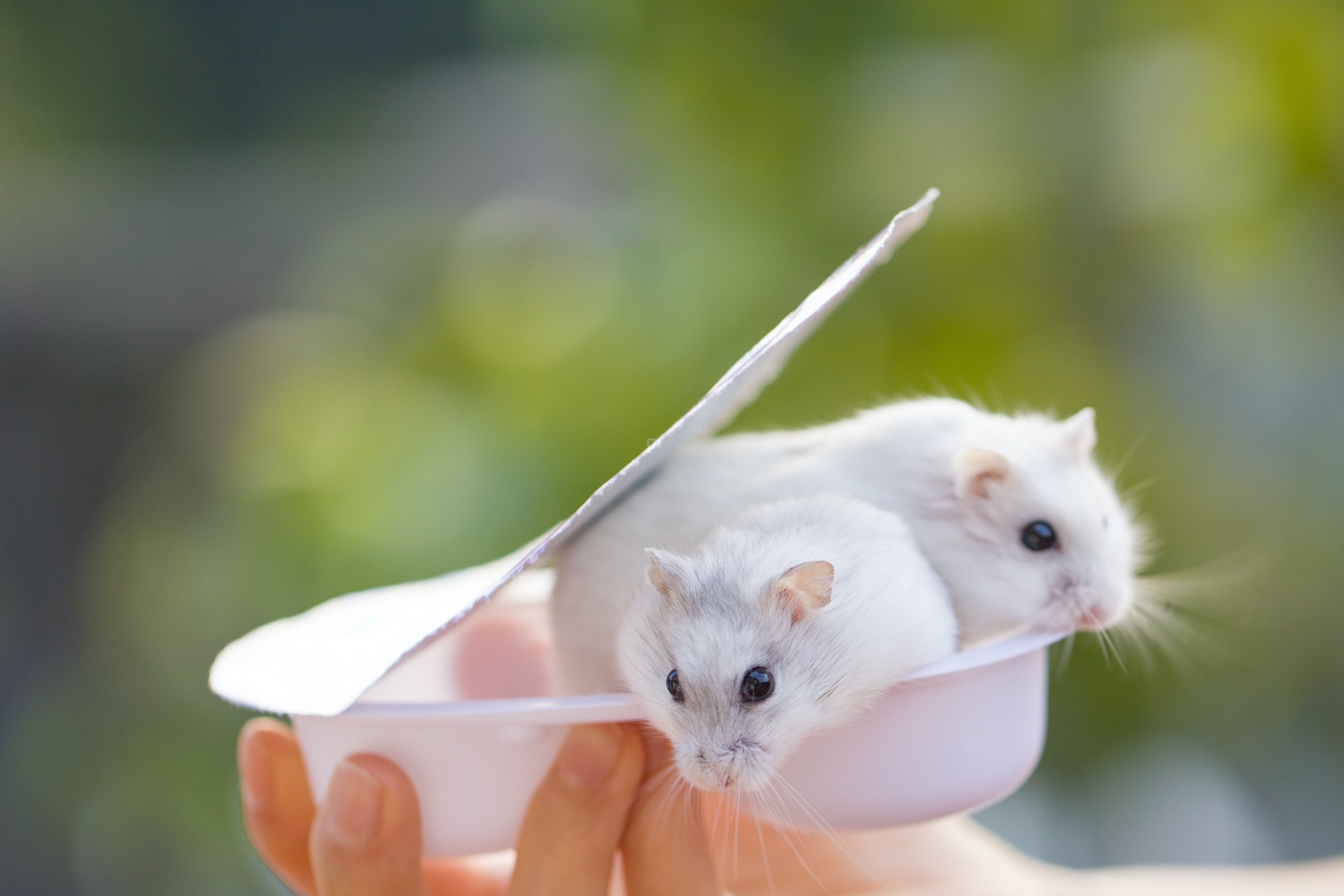Most hamsters are gentle and timid creatures that enjoy the company of their human companions. However, there may be times when your hamster bites you. This can be a sign that your hamster is trying to establish dominance or show aggression.
In most cases, using a simple training method can help prevent your hamster from biting. In this blog post, we will share with you how to train hamsters not to bite. Stay tuned!
How to train hamster not to bite
1. Start with the signal "quiet"
The first thing you need to teach your pet is when it is allowed to bite, and when not. In order for this initial training to succeed, you need a special word or sound. This will be your hamster's "off" button. And yet our goal should be that we do not even need to use it.
You can teach your pet to associate this sound with an unpleasant consequence, which will prevent the hamster from biting. But first, you need to show your hamster that you are worthy of its trust, by not hurting it during this initial training stage.
2. Act aggressively toward the animal
Start acting aggressively toward your pet! Show your hamster that you can harm him, by making a fake attack on him. Just pretend to slap it with the palm of your hand.
You do not need to actually meet its soft furry body - this is only for the sake of demonstration, and so that it understands who is boss in their relationship. As soon as your pet understands that you can hurt him, and yet do not intend to - he will be afraid of your next move.
3. Do not rush to touch the hamster after the first training session
After this first stage has been completed successfully, be a little calmer towards your pet for a day or two. You should only pat it gently. And from time to time, you can repeat the "slapping" demonstration. In a day or two after your pet gets used to it again, decrease the intensity of your demonstration once more.
4. Repeat the training sessions
The next step is to repeat the training process with a shorter interval between sessions. You need to demonstrate aggression to your hamster about once a day. You should try to pat it less and less over time until you finally get rid of this procedure completely.
This training process can take up to 1 month. The main thing is that there are no breaks in the repetitions! If you were not able to show aggression towards your pet during some session, pick up the next time without any hesitation.
5. Hamsters remember what is bad for them
If you have completed all of the training sessions successfully, your hamster should understand that it is not allowed to bite you in any situation. And yet if you just leave your pet to itself - sooner or later, when something happens, it will start biting you again.
It is important to remember that hamsters are trying to test your behavior, remembering well what is bad for them, and what is good. To avoid having your pet bite you after the training process has been completed - simply continue being aggressive towards it from time to time, demonstrating that you are still its boss.
If it makes an attempt to nip you even once after the training process - you should demonstrate aggression towards your hamster again.
6. Distract your pet if it starts biting you during play
If your pet still decides to nip at you during the game, start acting more aggressively towards it, moving away from it or swinging your hand as if to slap it. If you do this, your hamster will understand that it is bad to bite during the game and that you will stop playing with it if it makes a mistake again.
7. Try not to let your pet see your fear of being bitten
If the animal starts biting you in situations other than games, such as when you are trying to clean its cage, it is important not to show your fear of being hurt. Try to distract your pet first by making the sound described in step one, and only after that start demonstrating aggression towards it. If you show your weakness - it will have another reason to nip at you again.
8. Do not be afraid of your hamster
If you cannot get rid of the animal from nipping at you, even after finishing all 7 stages described above - it is time for the last resort. In order to stop your pet from biting you in such situations, do not show any fear.
If you scream or run away because it bites you, your pet will think that you are afraid, and it is allowed to do this. For example, if you shriek when the hamster shows its teeth during cleaning of the cage - stop doing this for a while.
Show that you still have no fear towards it, but at the same time stay alert and ready to demonstrate aggression towards it if it makes a mistake. You may need to repeat this step several times before your hamster realizes that it is not good to bite.
9. Teach the animal a sound that signals aggression
It is important not only to show aggression towards your pet but also to teach it a sound by which you will be able to signal that you are about to nip at it. You can teach your hamster this sound by barking like a dog or making the same sound when you see an unknown person near it. It will be an unusual sound for the animal, and it will not be afraid of it.
10. Move away from your pet during cleaning of the cage
It is possible that you will not be able to train your hamster, and it will still bite you during cleaning or other situations.
In this case, try to distract it first, as described above - by barking like a dog. If it does stop biting for some time after trying to intimidate the animal with your voice - it is time for you to show that you are the one who is in charge.
Move away from your pet - this will make it understand that biting at you during cleaning of the cage gets on your nerves, and there are some actions that are strictly forbidden.
11. Watch carefully for signs of aggression
If your hamster shows its teeth while you play with it - do not immediately stop playing. Perhaps it is simply playing, and demonstrating aggression towards you. But if the animal bites you all of a sudden, without warning - most likely it is not trying to play anymore, but is actually showing aggression towards you, and is trying to attack you. It is important that you interrupt the game before it gets too serious.
12. Cut the game short if your hamster is very aggressive
If you notice that your pet becomes aggressive towards you during play at an early stage - before it starts nipping, stop the game immediately and try to distract it by barking like a dog. If you see that even this does not work - it is time for you to show that you are the one who is in charge. Move away from your hamster and do not resume playing with it until it calms down.
13. Pay attention to your hamster's behavior when playing
You should know what your pet likes and dislikes while playing because this will give you a hint of when it is time to stop playing. If the animal starts moving in circles or running frantically - this means that it likes what you are doing, and you can continue for a while longer.
But if your pet shows signs of boredom, such as squeaking repeatedly, not looking at you anymore, etc., try to distract it by barking like a dog. It is time to stop the game if your hamster starts eating food or climbing onto its wheel when you are playing with it, for example.
14. Do not let your hamster get bored
If your pet gets bored of playing with you, this may lead to aggression or biting at you during playtime, because the animal is not happy with what it is doing. Pay attention to the signs of boredom and put an end to the game as soon as you notice them.
If your hamster becomes aggressive towards other members of your family or has a tendency to bite at them - do not allow free contact between these people and the pet, because they will think that it is not dangerous to play with it.
Your hamster is still young, and the training methods described above may still help you in its upbringing.
15. Keep your pet in a comfortable cage
The animal needs time to get enough sleep, so allow for at least 8 hours of sleep every day. Do not handle your hamster for at least one hour after it wakes up so that it can wake up completely and its natural aggression will not be triggered.
16. Give treats
Hamsters love food and if there is some treat, they ignore everything else including biting their owner. The more tasty the treat is the faster your hamster will forget about his teeth and start loving you with all his heart instead of trying to eat your finger.
Conclusion
It’s important to prevent your hamster from biting people. This is not only dangerous for the person, but it can also lead to problems with other animals in the house. If you find that your pet has bitten someone, please contact a veterinarian immediately.
Be patient as this may take some time for your furry friend but eventually they will learn that biting is unnecessary! We hope you found this article helpful. If not, let us know what we can do to improve it in the comments below!





